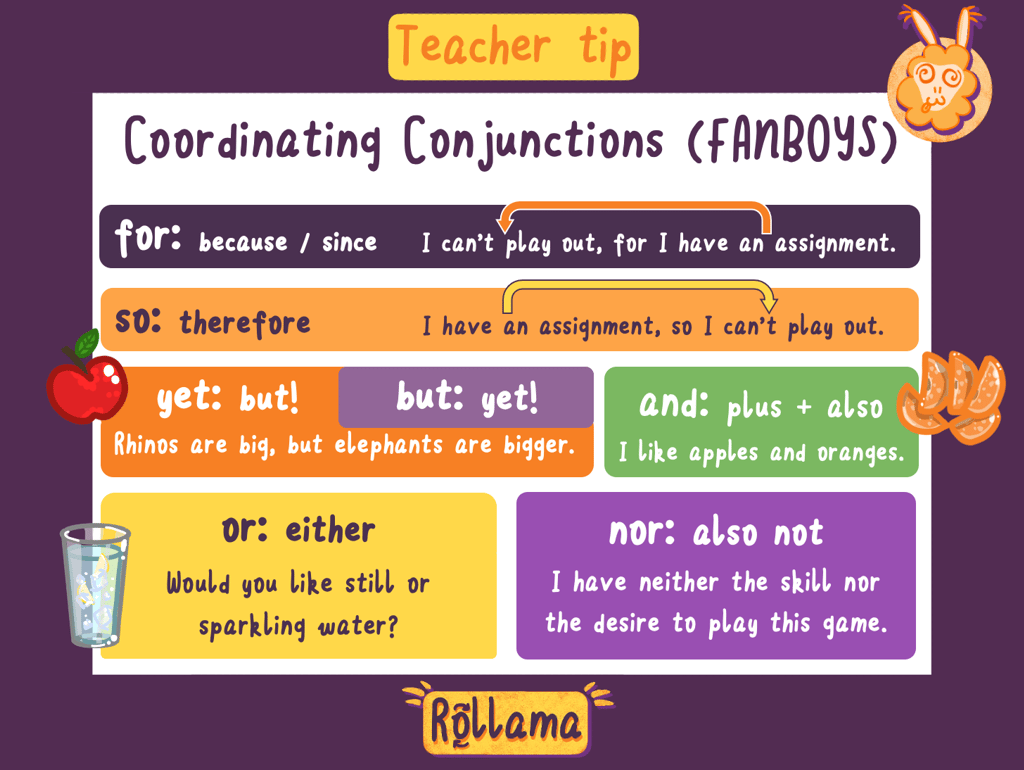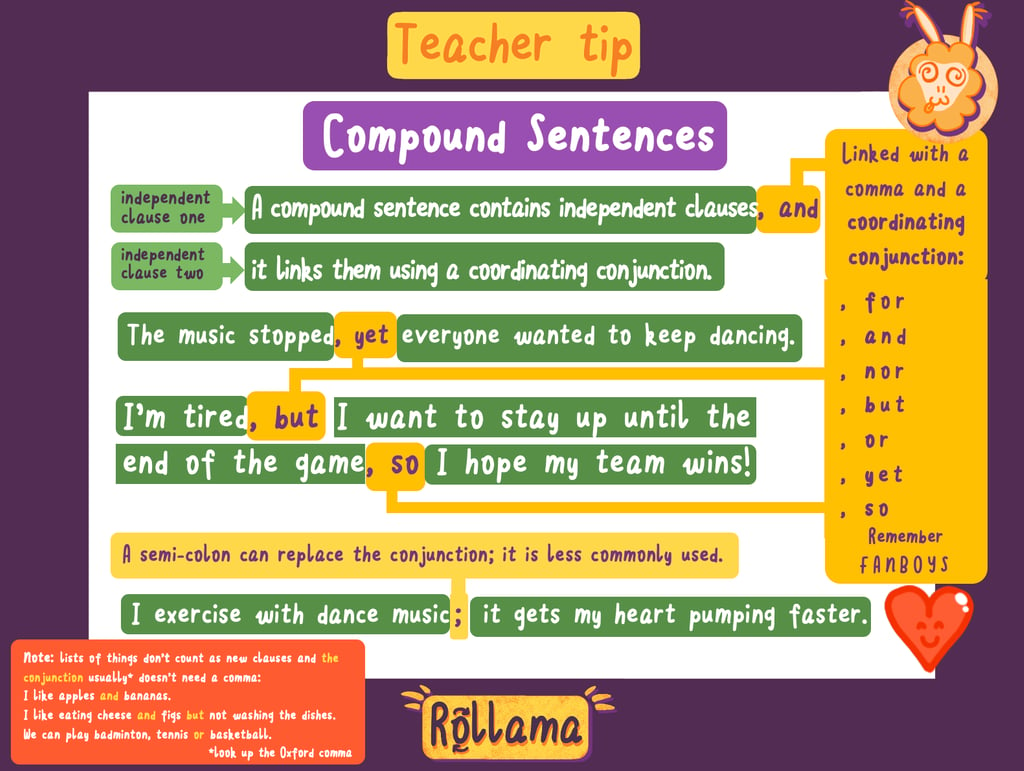Commas
How we cover commas on Rollama
ENGLISH
Andrew from Rollama
12/4/20232 min read


A teacher got in touch this week to ask about how we use commas in our activities:
"I absolutely love Rollama and the children love it too. However, the children have noticed that in the co-ordinating conjunction activities the conjunction is always presented with a comma. I know there is a lot of debate around commas but on the whole to meet SATS criteria I thought the general rule was to not use them in this scenario? I said I would email on behalf of the children to ask why."
Firstly, it's great to know that students are proactively seeking clarification about commas! All teachers will know that commas are often found sprinkled like pepper throughout students' writing, if at all – and it's no wonder! Commas are one of the most inconsistent punctuation marks. Even professional editors and publishers disagree about where they should be used!
In this article, I'll run through what the National Curriculum (NC) says, and how we've applied that in our activities.
The guidance on commas is quite limited in the NC:
In Year 2, commas to separate lists;
In Year 3, commas to punctuate speech;
In Year 4, after fronted adverbials;
And lastly in Year 5, about the 'Use of commas to clarify meaning or avoid ambiguity'.
Coordinating conjunctions are not mentioned specifically, and are not tested in the SATs. There are some style guides which recommend commas before FANBOYS when joining two independent clauses. We feel this is quite a good habit to help students notice clauses, even if it's not consistent in every text they'll see.
One of the best sites I use for reference when making games is: http://englicious.org/glossary. It is maintained by Bas Aarts, a grammar professor at UCL, who I have chatted to a few times – but even they have very little to say about commas!
There's another interesting article about it here (albeit American English, so take with a pinch of salt! https://www.grammarly.com/blog/coordinating-conjunctions/)
Notice that the header image here includes some FANBOYS conjunctions without commas. This second poster shows how commas between independent clauses can help the flow of meaning and make the content more digestible.
It's not a black-and-white topic, unfortunately.
We could have left them out entirely, but we've tried to go with something which will help children understand the structure of sentences a little better. Of course children can be good writers without strong commas, but they are another little tool that writers use to control the flow of a passage.
The Oxford Comma is another highly divisive point which we've had to pick a side on...
Again, we'e erred on the side of giving students the option of a workout to improve the control of their writing. If they choose to disregard it in their own style, so be it!
If you disagree, feel free to skip those pages!
We're always happy to receive feedback about Rollama. Let us know how we're doing!


© Rollama Education Ltd · UK Registered Company 13521924 · Trade Mark: UK00003750519 · GDPR Registered · ICO Data Protection Reference ZB138761 ·
